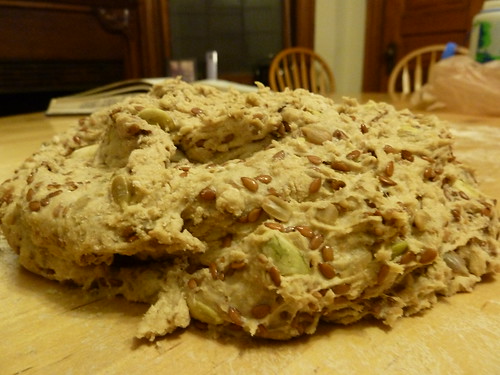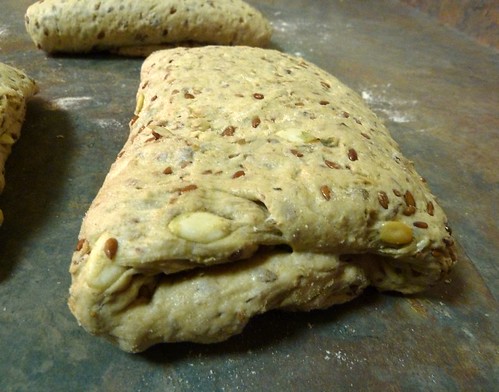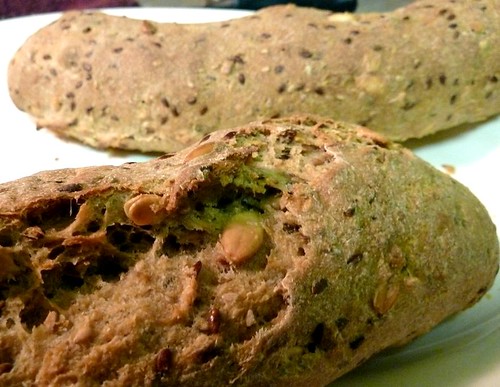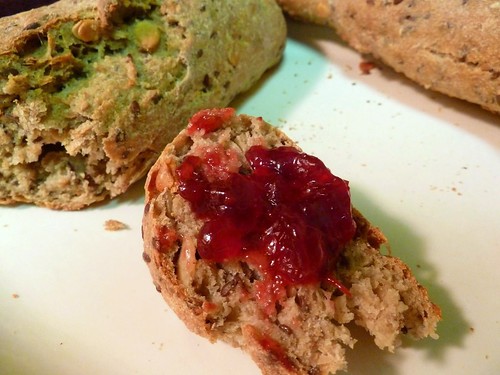With the starter successfully made, now it's time for my first rye bread. I chose to make the Alpine baguettes from Local Breads as a first recipe because while the bread uses a rye starter, the bread itself is made using wheat flour, making the dough easier to handle.
First, soak the grain and seeds the night before making the bread. This recipes calls for oats, pumpkin seeds, sunflower seeds, flax seeds, and sesame seeds.
Next time, mix together the seeds and the flour mixture. This is when dough whisk comes in handy (thanks Joedy!).
As you can see, the dough is quite sticky.
Unfortunately I got distracted while measuring flour and forgot how much I added, so I tried to play by ear. I had to add A LOT of flour to prevent the dough from gluing onto my hands. My guess was that I miscounted by 1 cup. Even after adding +1 cup of flour, this is still a fairly sticky dough to work with. Finally, I realized that the trick is to use a pair of very well-oiled hands to knead the dough.
After the first rising, the dough divided into 3 pieces and each piece fold into thirds:
The dough is then rested for about an hour until it it puff up, and shaped into baguette form. It then goes into the oven for about 25 minutes. I didn't have parchment paper, so the baguette dough got somewhat misshaped when I lifted it from the counter to the baking stone.
Whole wheat grains taste better after it's been cooled down. However, I couldn't wait that long as I was hungry. When cut immediately after coming out of the oven, the inside look almost gummy:
It taste really good with lingonberry preserve:
As you can see, the appearance improved next day. It looks much more bread-like.
(Those are Italian veggie sausage in the background. I have to admit they are actually pretty good and the spiciness goes well with rye breads).
For a first attempt, I was happy with the way this bread turned out. It was the first time in years I had bread that somewhat resembled the bread I ate in Germany. The aroma of the bread is slightly tangy without being sour at all. The pumpkin seeds give it a nutty, earthen scent. The rye starter gave it a unique flavor that taste worlds apart from the rye one get at the supermarkets here. Despite forgetting how many cups of flours I put in and trying to eye it from there, the bread took a life of its own and was well-received by the people I shoved it to. So if people tell you that rye sourdough or German breads are hard to make, or if things don't look perfect, don't fret, just go make it. It may actually turn out fine!










